Restore your confidence — with trusted care from Rattinan Clinic.
At Rattinan Clinic, we understand that gynecomastia — the enlargement of male breast tissue — can affect not only your appearance but also your self-esteem. Whether caused by hormones, genetics, or medication, it’s a common condition, and treatment is highly effective.
Our experienced surgical team offers safe, proven solutions to restore a more masculine chest contour. You’ll receive personalized care in a certified facility — from consultation to recovery.
Flat Male Chest vs. Gynecomastia Condition

Normal Male Chest: Flat or slightly contoured, with minimal glandular and fatty tissue, mainly muscle.
Gynecomastia: Enlarged breast tissue due to hormone imbalance, giving a fuller, rounded chest shape similar to female breast tissue.
Why Does Gynecomastia Happen, and What Can You Do?
Gynecomastia is enlargement of the male breast tissues (also known as men boob), which may cause it to look like a woman’s breast or have pointed nipples.
These are physical features that many men may not like, as pointed nipples, especially, can be evident even when wearing a shirt.
Gynecomastia may be embarrassing and can be a source of great insecurity, but surgical interventions can help reduce the appearance of enlarged male breasts.
Gynecomastia Symptoms
- Breast pain or tenderness
- Enlarged areola
- Nipple discharge (occasionally)
- Hard lumps
- Swelling
Surgical Procedure
Gynecomastia surgery typically involves liposuction, glandular tissue removal, or a combination of both.
The approach depends on the cause and severity.
- Liposuction removes excess fatty tissue through small incisions.
- Excision may be required if glandular tissue or excess skin is present.
- Incisions are placed discreetly, often around the areola or in the natural creases of the chest.
The goal is a flatter, firmer chest with natural proportions.
Hospital Admission
Most patients return home the same day. The procedure is outpatient and minimally invasive.
Duration of Operation
Approximately 1.5 to 3 hours, depending on the technique used.
Anaesthetic
Performed under general anesthesia or local anesthesia with sedation, depending on the case.
Recovery Time
2 to 3 weeks for most daily activities
Many patients return to light work or normal routines within this period.
However, full recovery—including adaptation to the new eating habits and physical activity—continues over several months with ongoing medical support.
Our Doctors

Dr. Suthipong Treeratana
M.D. – Founder & CEO

Dr. Jatuporn Suesat
Plastic and Reconstructive Surgeon

Dr. Taveechai Taveecharoenkool
Otolaryngologist

Dr. Aniwat Nillakarn
M.D.
Pre-Operative Care
Before surgery, you’ll have a full medical evaluation to confirm the diagnosis and plan the best approach. We’ll review your health history, adjust any necessary medications, and provide step-by-step preparation guidelines. Our goal is to make sure you feel informed, comfortable, and ready.
While gynecomastia isn’t usually harmful, it can affect self-esteem. Breast reduction surgery can help create a flatter, more natural chest, boosting confidence and comfort. The procedure is typically done as an outpatient under general or local anesthesia.
Investigations May Include:
- Physical exam
- Blood tests
- Breast ultrasound
- MRI (if needed)
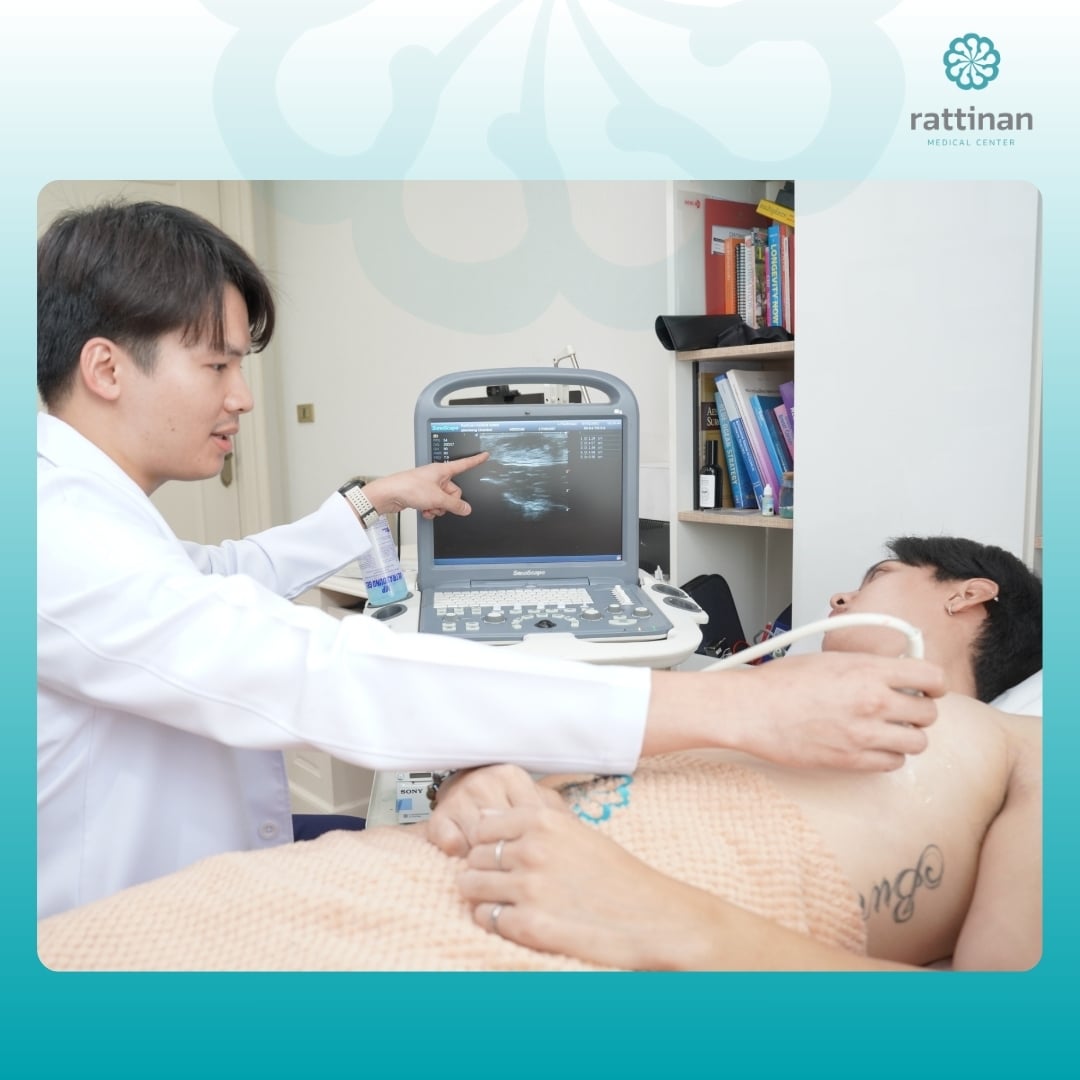
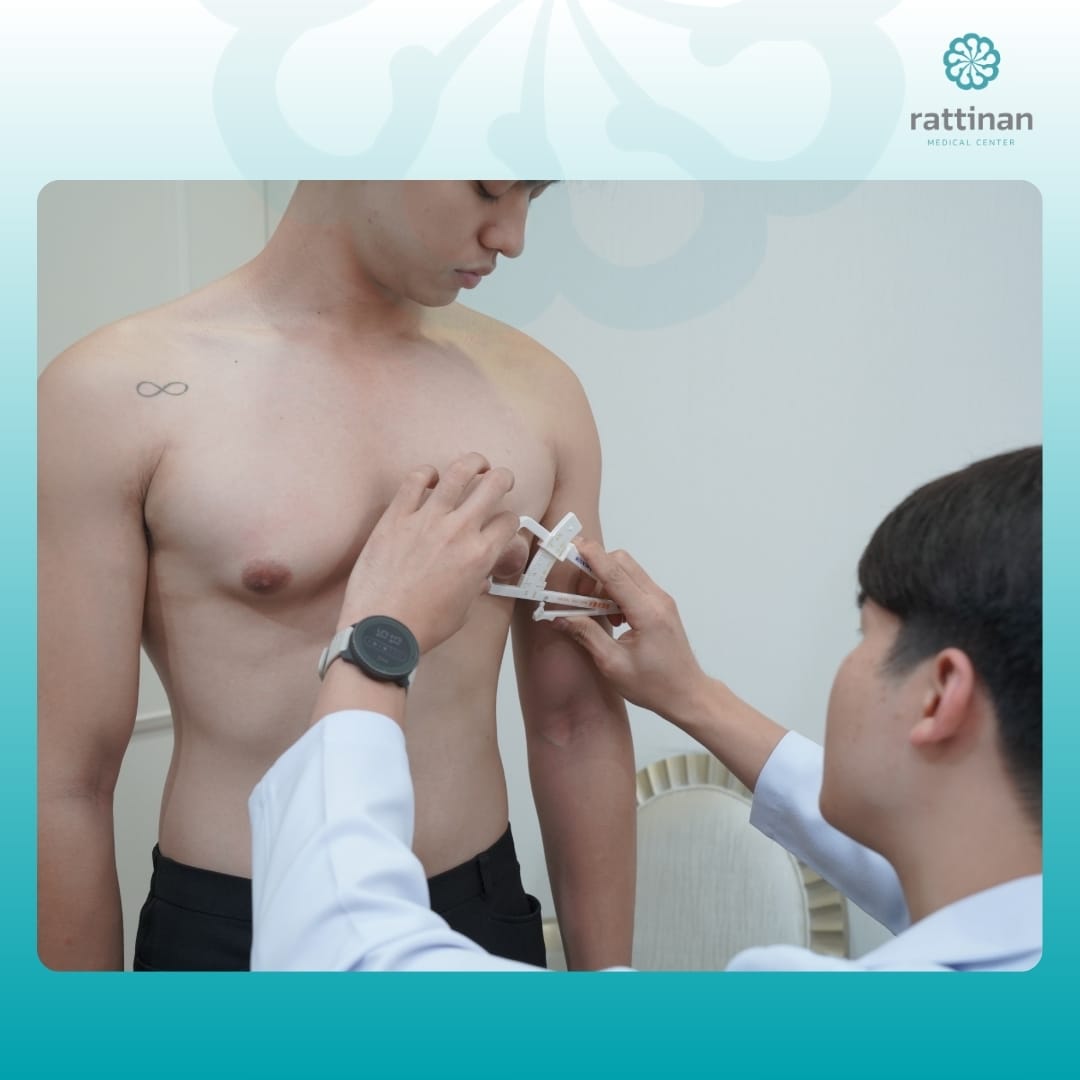
Pre-Surgery Preparation:
- Lab tests to assess your health
- Stop aspirin, NSAIDs, blood thinners, and certain supplements (like omega-3, gingko, green tea) 1 week before surgery
- No smoking or alcohol before surgery
- Avoid caffeine on surgery day (it can affect heart rate with anesthesia)
- Fast for 6–8 hours before the procedure
- Wear loose, comfortable clothing; you may have a drain and compression garment after surgery
Why Does Gynecomastia Happen?
Gynecomastia in Teenagers
Breast tissue growth happens in men (men boobs) during three stages in the life span of an individual and they are infancy, adolescence and old age.
When teenagers go through puberty and becomes sexually mature, there are a lot of hormonal changes including estrogen dominance for some time and this can cause development of breast tissue.
Not all boys going through puberty will experience this but estimated 50% may develop breast tissue growth.
This called pubertal or teenage gynecomastia.
Gynecomastia in Adults
Men who are significantly overweight are very likely to feel some enlargement of their breast tissue.
This is partly caused by fat tissue under the skin on the chest wall, and partly by true breast glandular tissue.
Fat tissue anywhere in the body encourages formation of estrogen, and thus can lead to gynecomastia.
Grades of Gynecomastia
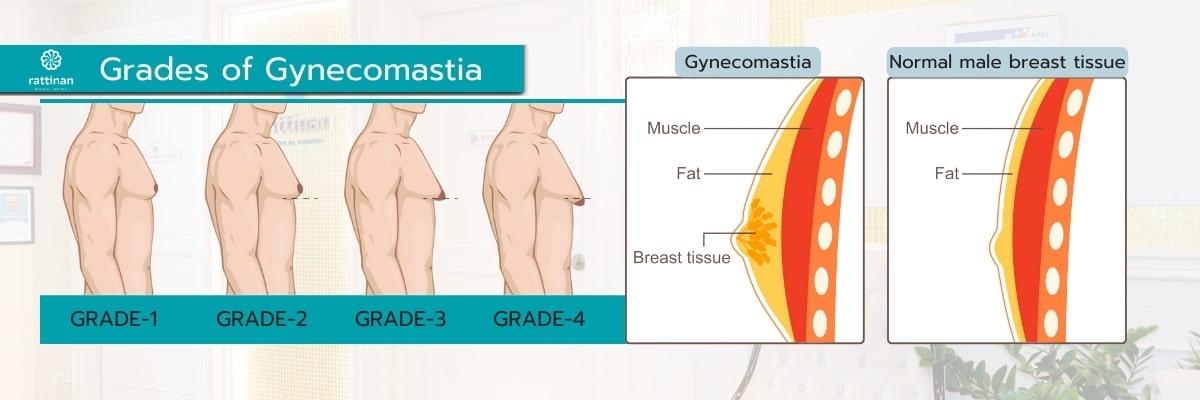
Grade 1 Gynecomastia
-
Swelling behind the nipple and areola
- Severity : Very mild
Grade 2 Gynecomastia
- Swelling across chest wall, indistinct edges
- Severity : Mild to high
Grade 3 Gynecomastia
- More prominent swelling, definite edge
- Severity : High and visible
Grade 4 Gynecomastia
- Sagging of breast (Feminization)
- Severity : Severe and visibly feminine
Planning Your Visit
For international patients, Rattinan Clinic streamlines the medical tourism experience, providing comprehensive support from the initial consultation to recovery. Our services include help with travel, accommodation, and a detailed treatment plan for a hassle-free journey. A dedicated Beauty Consultant will ensure personalized care throughout your stay.
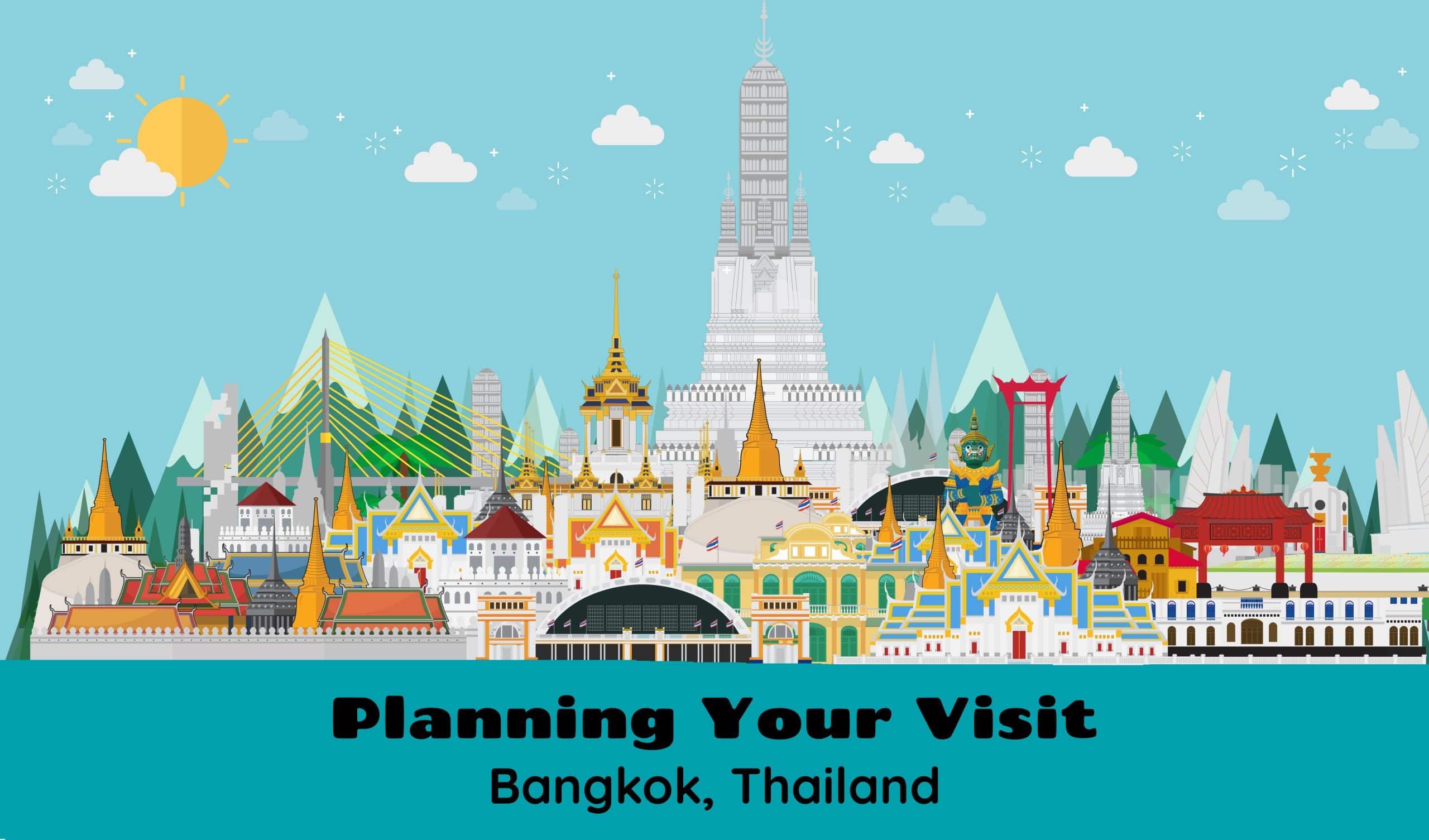

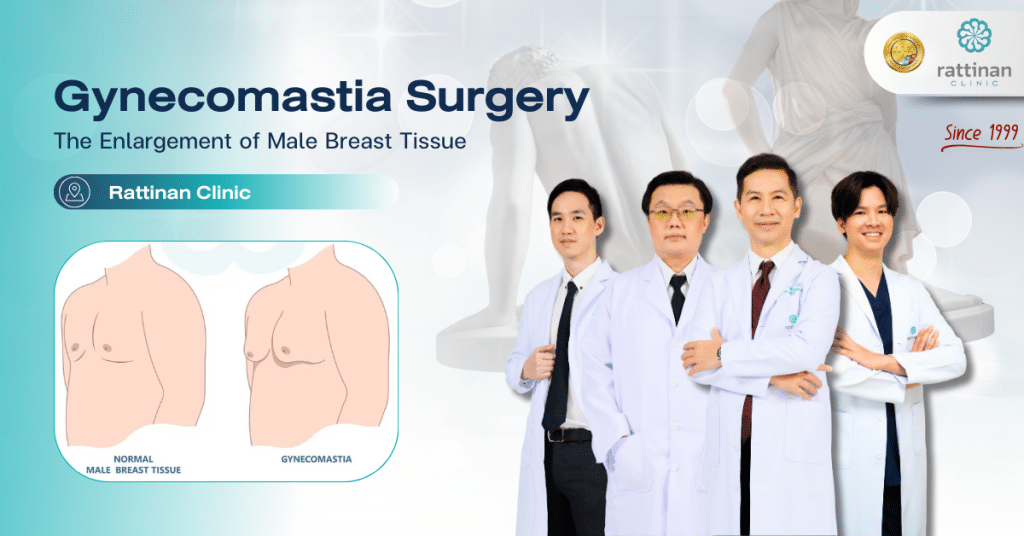

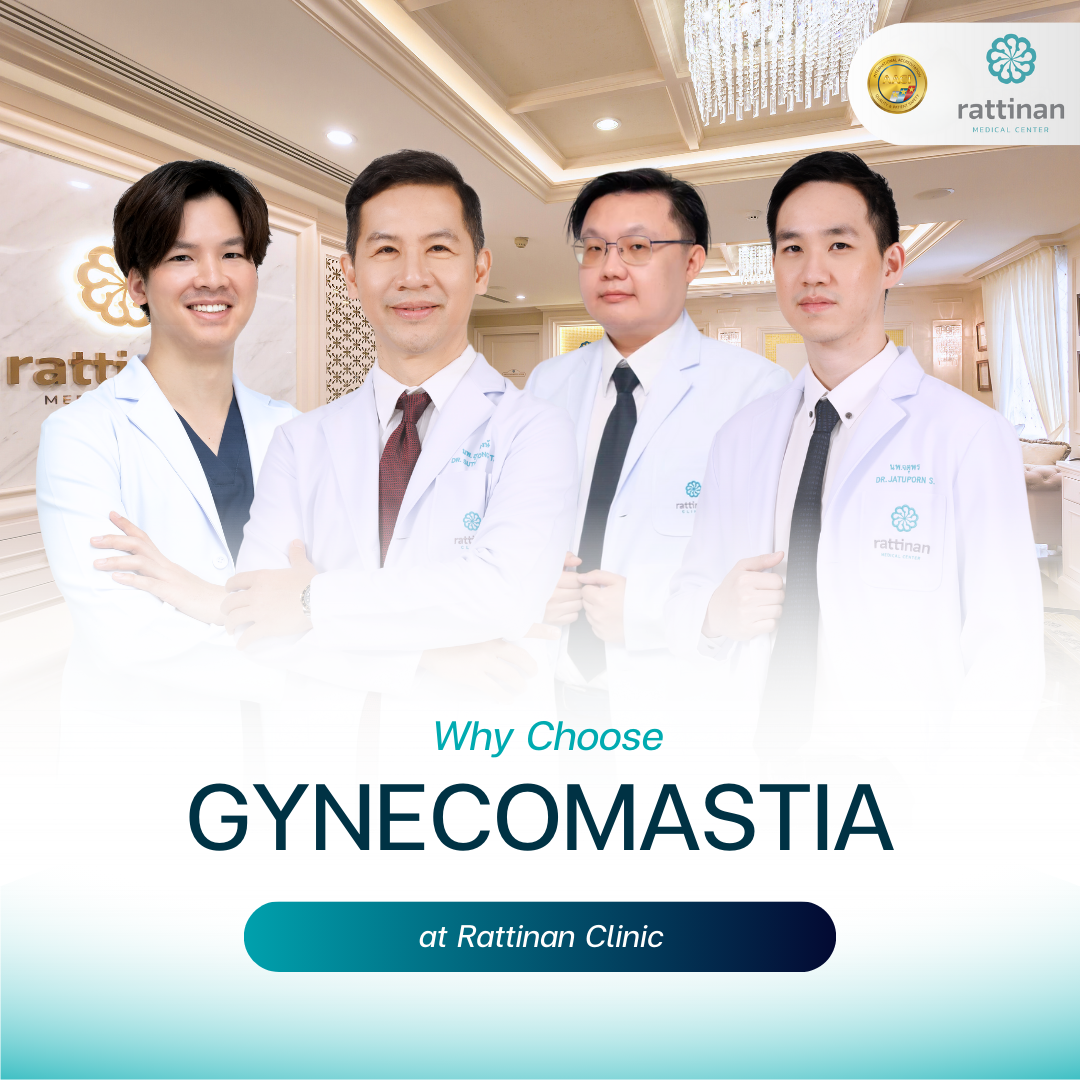
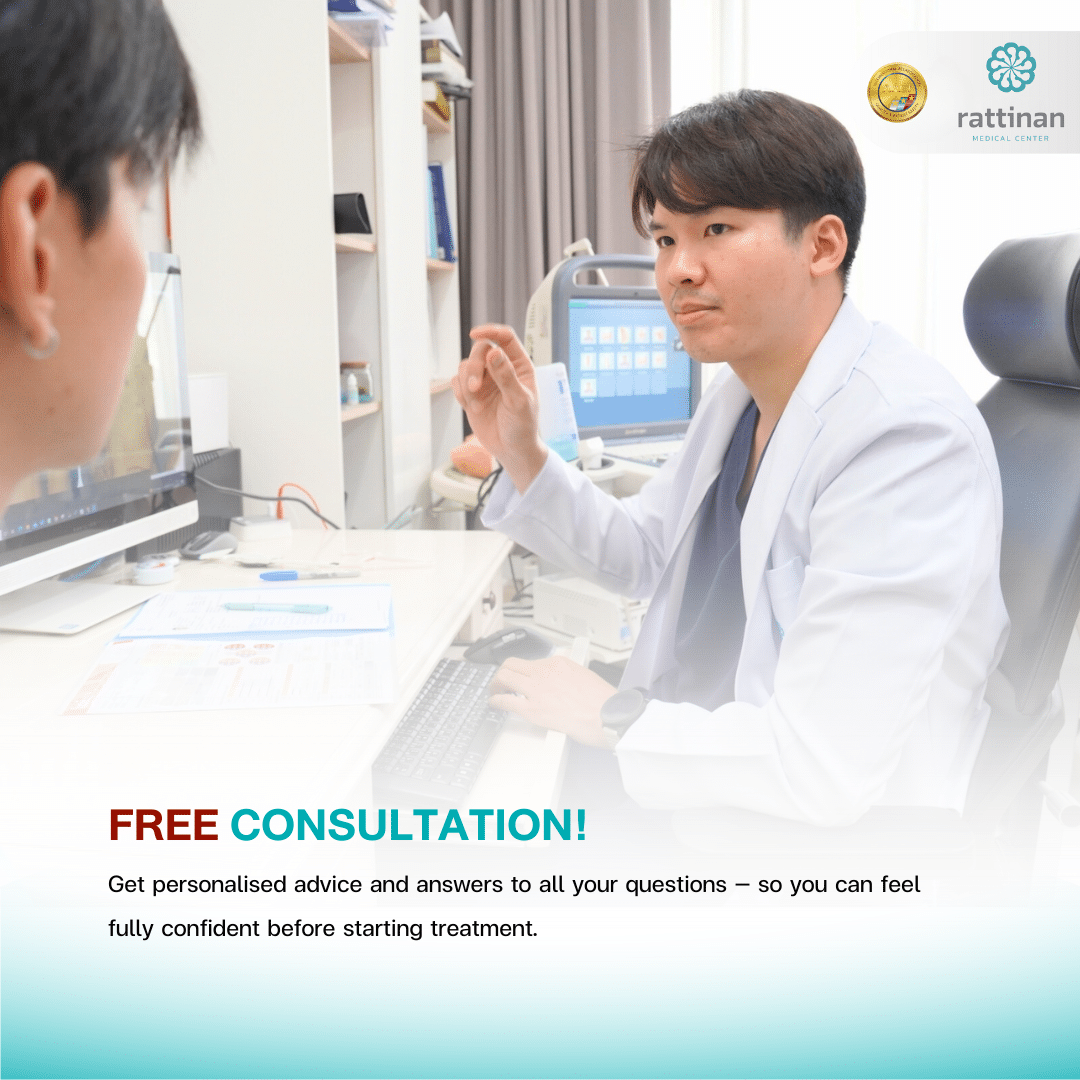
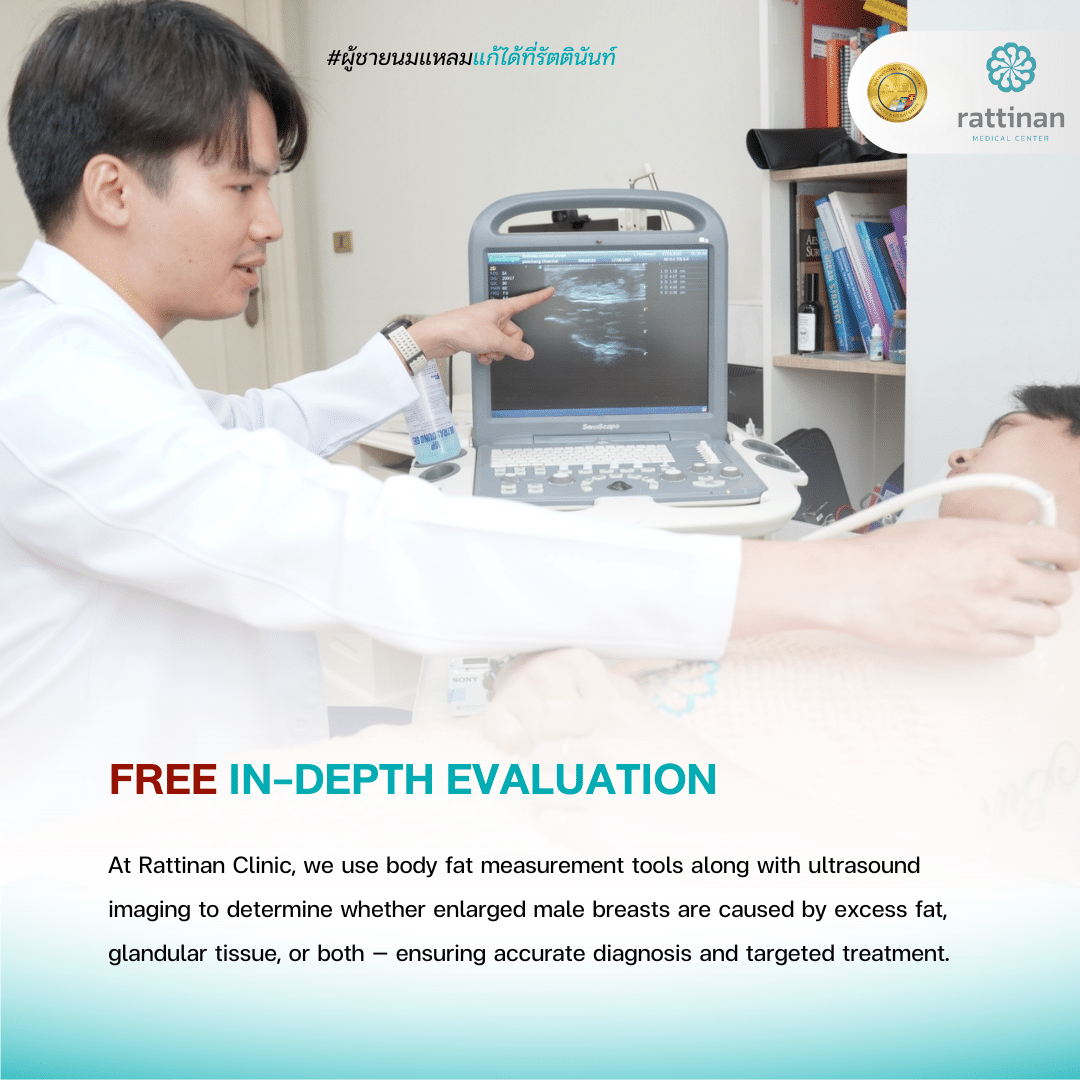
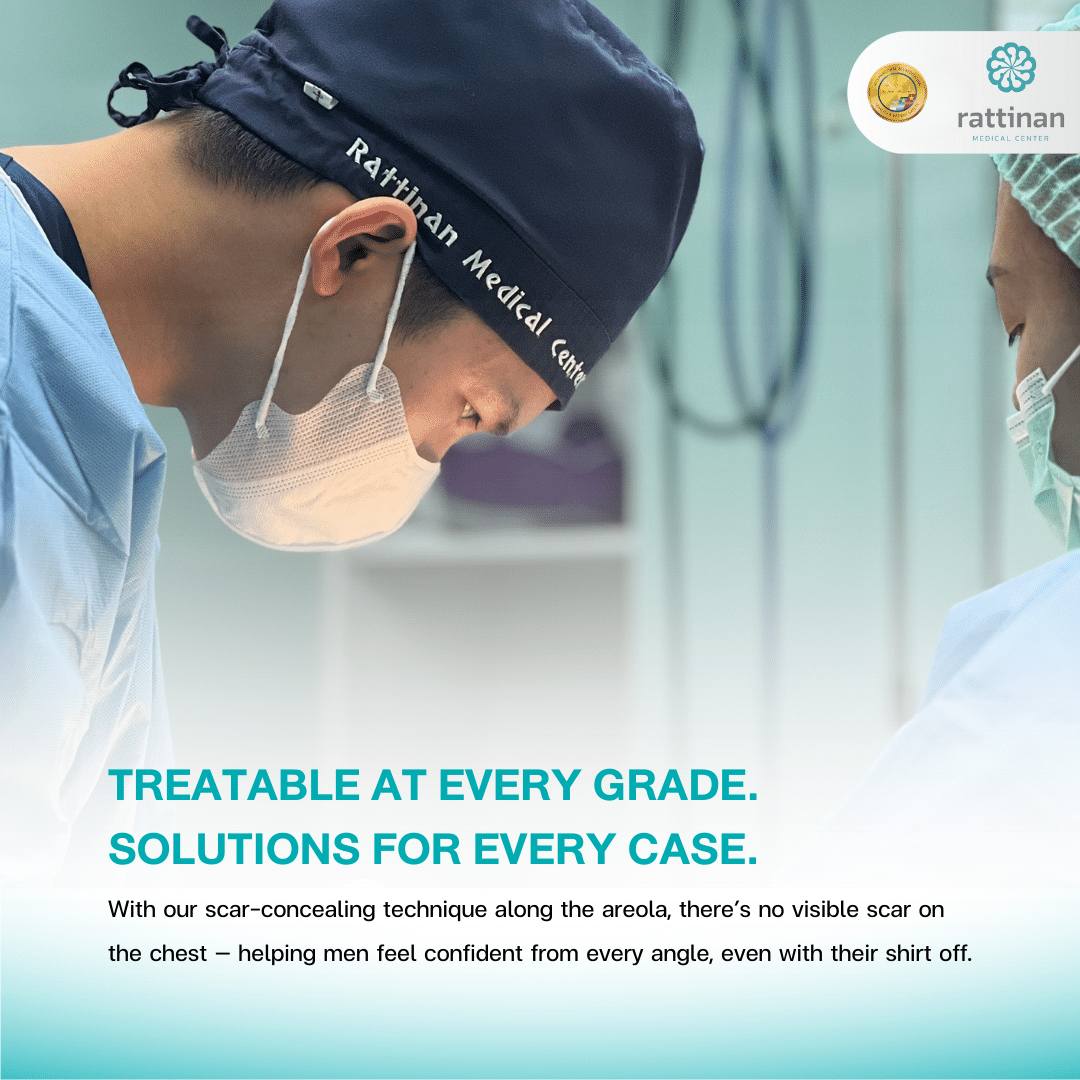
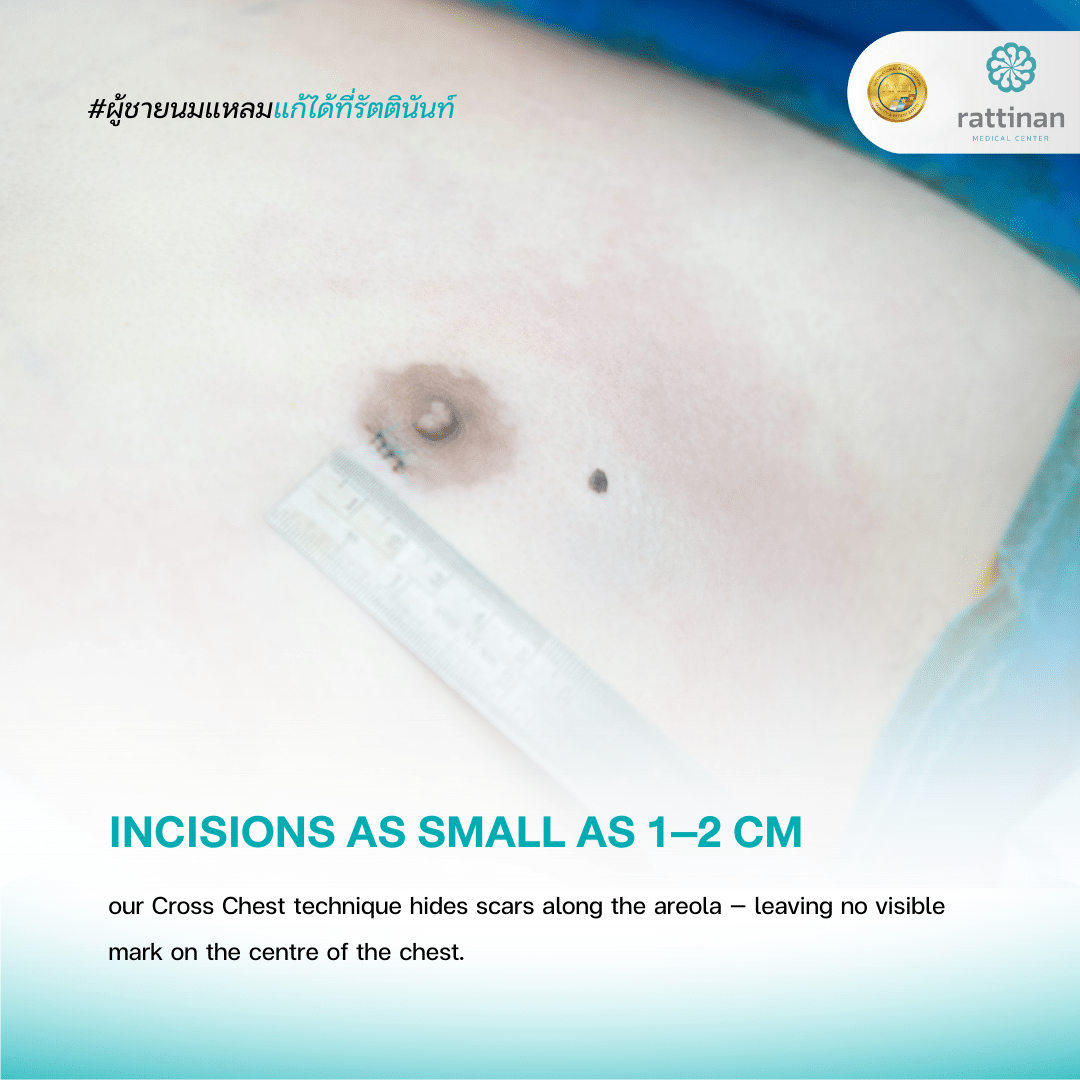
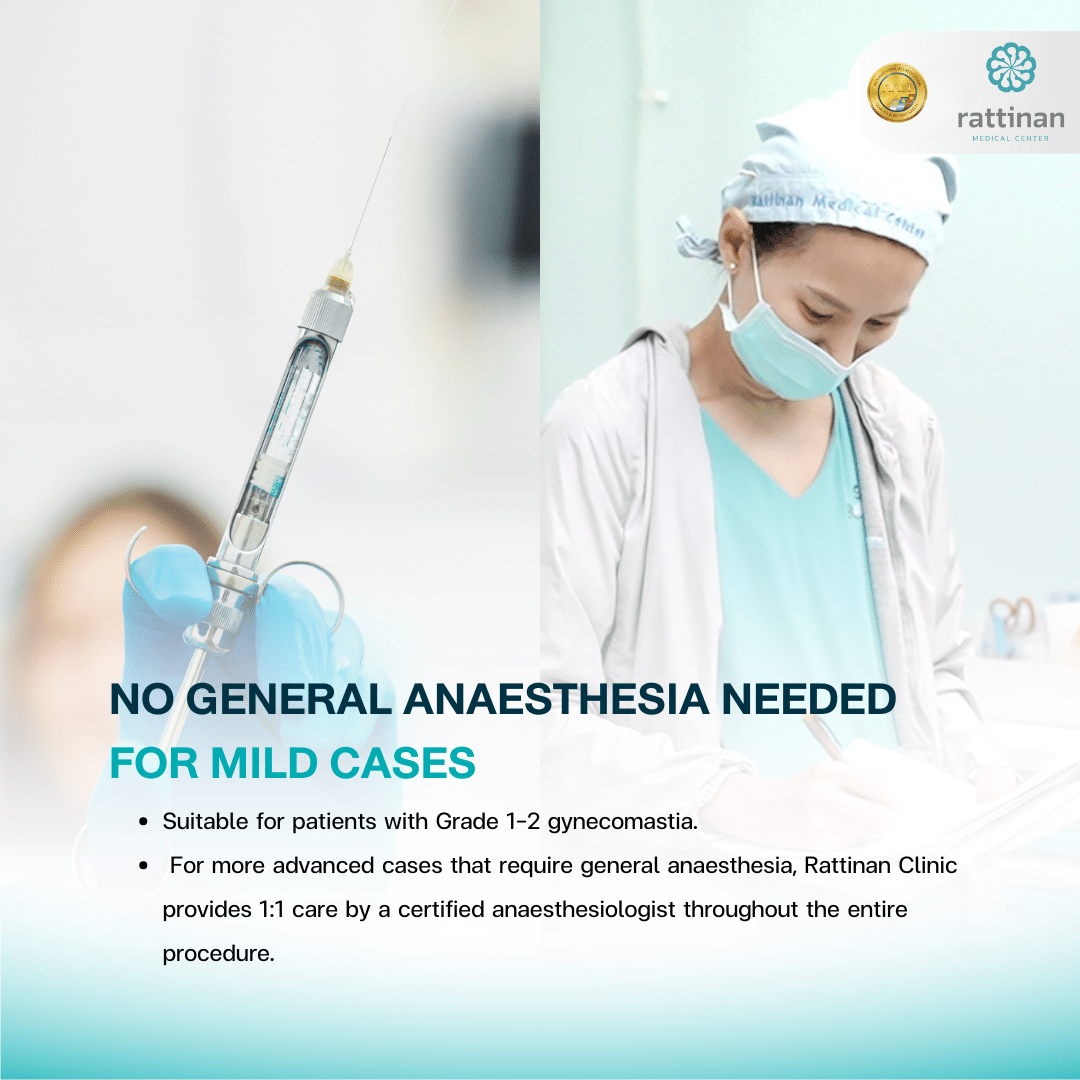
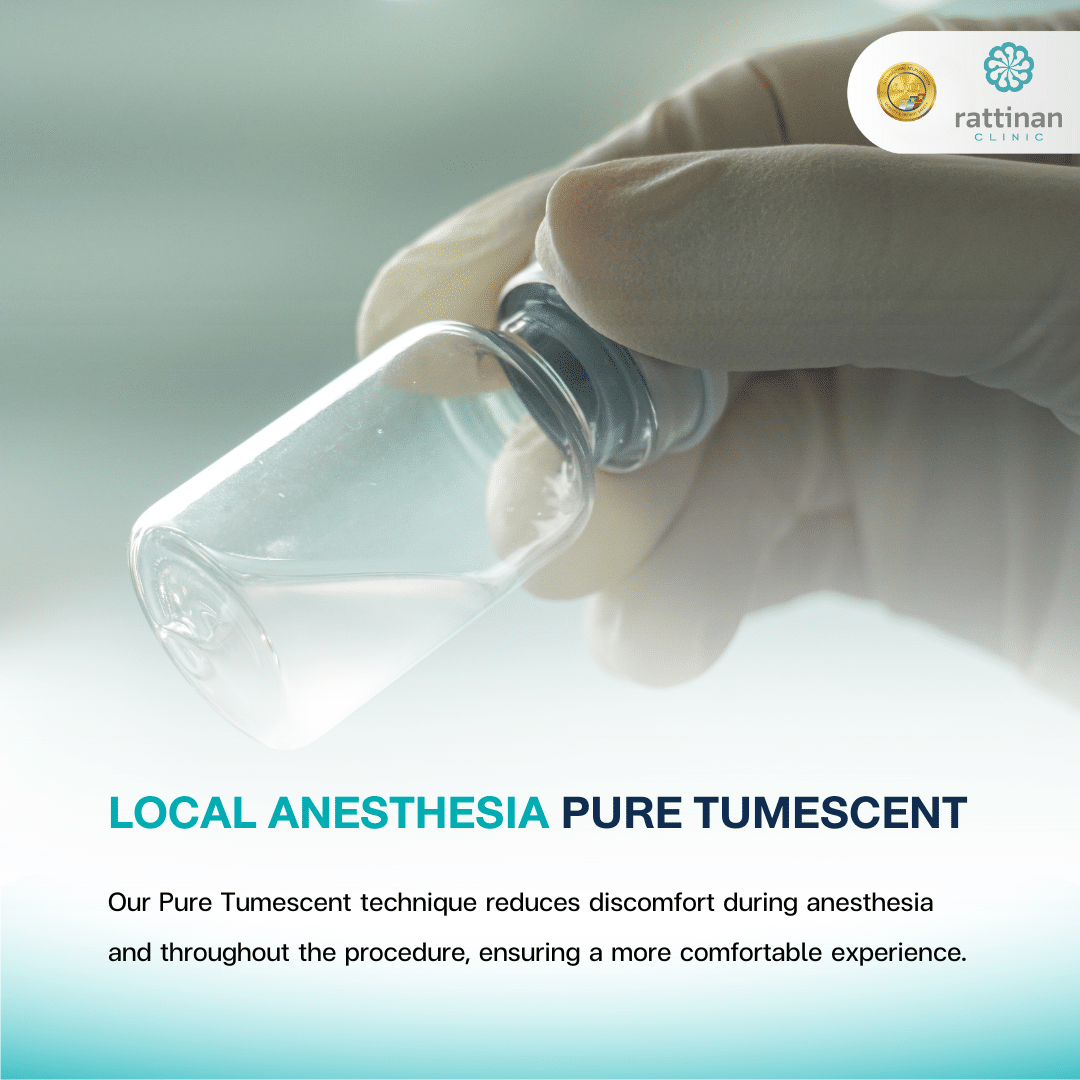
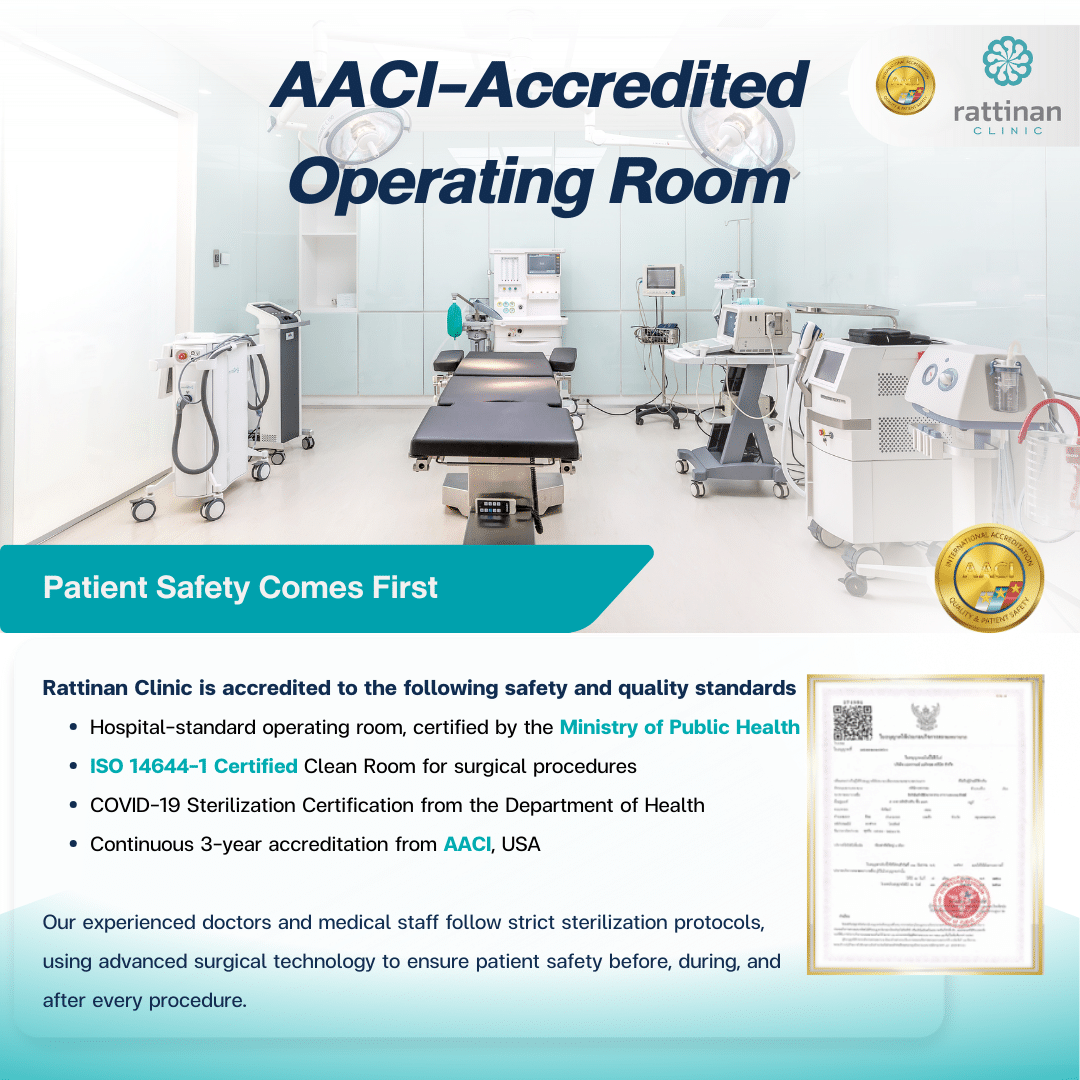
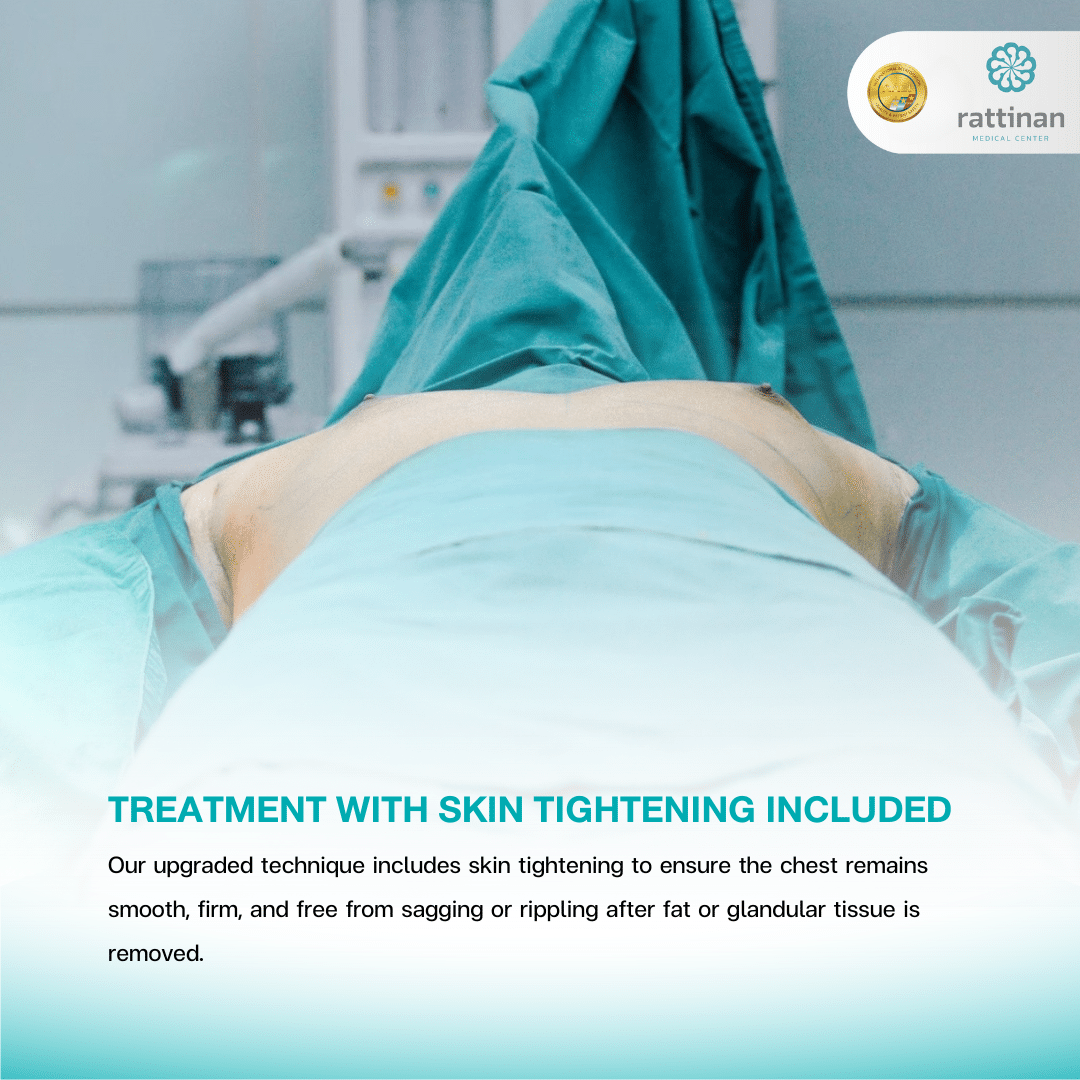
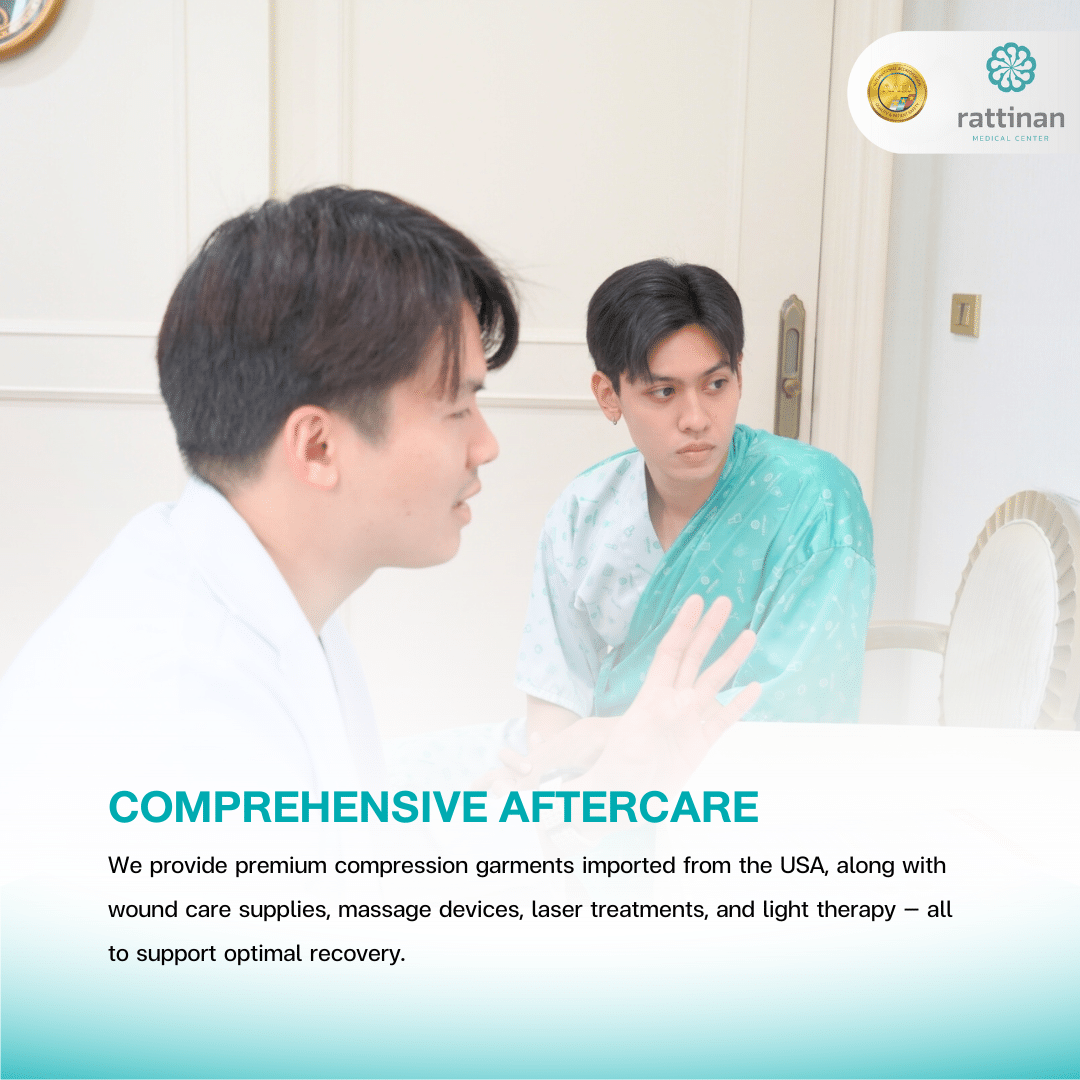
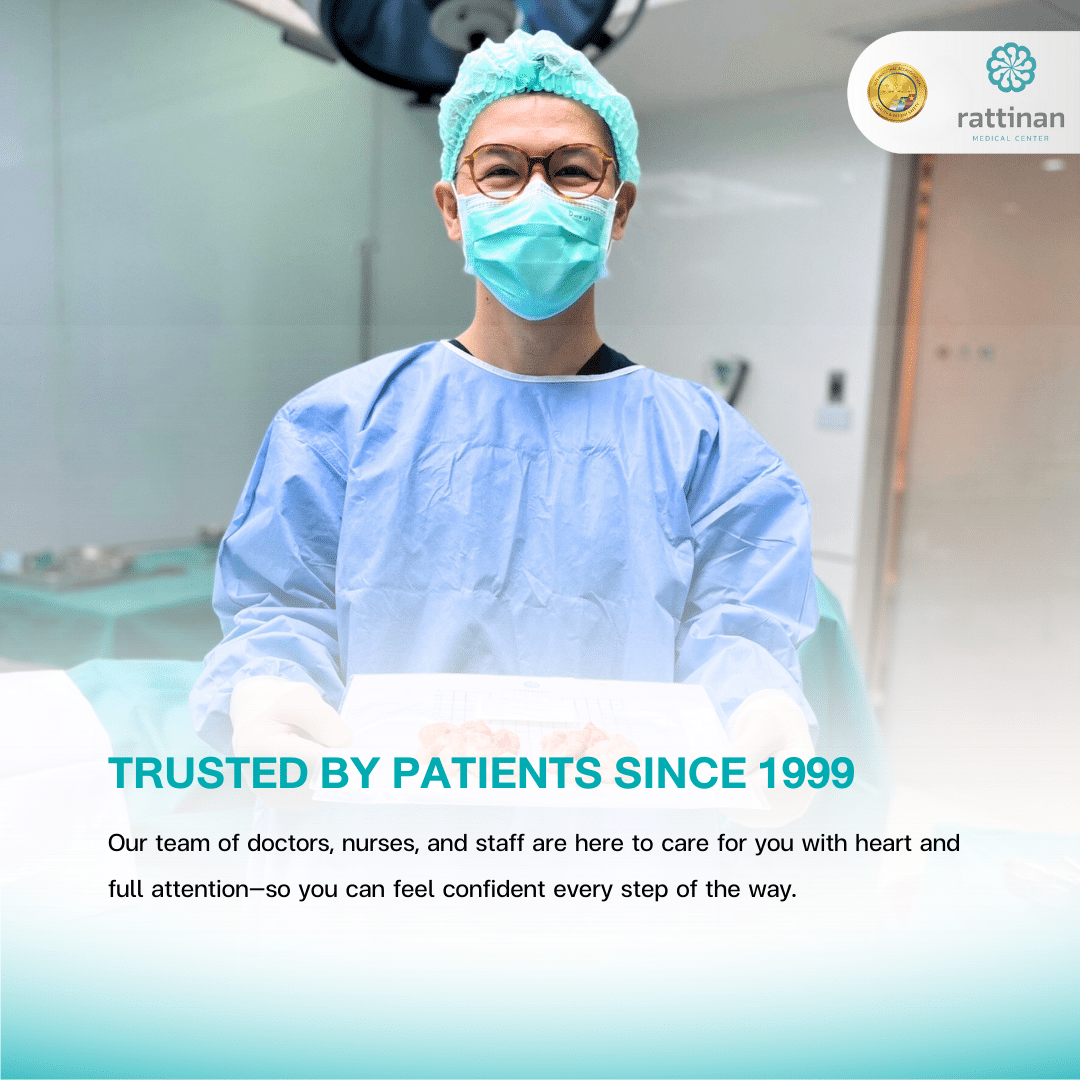
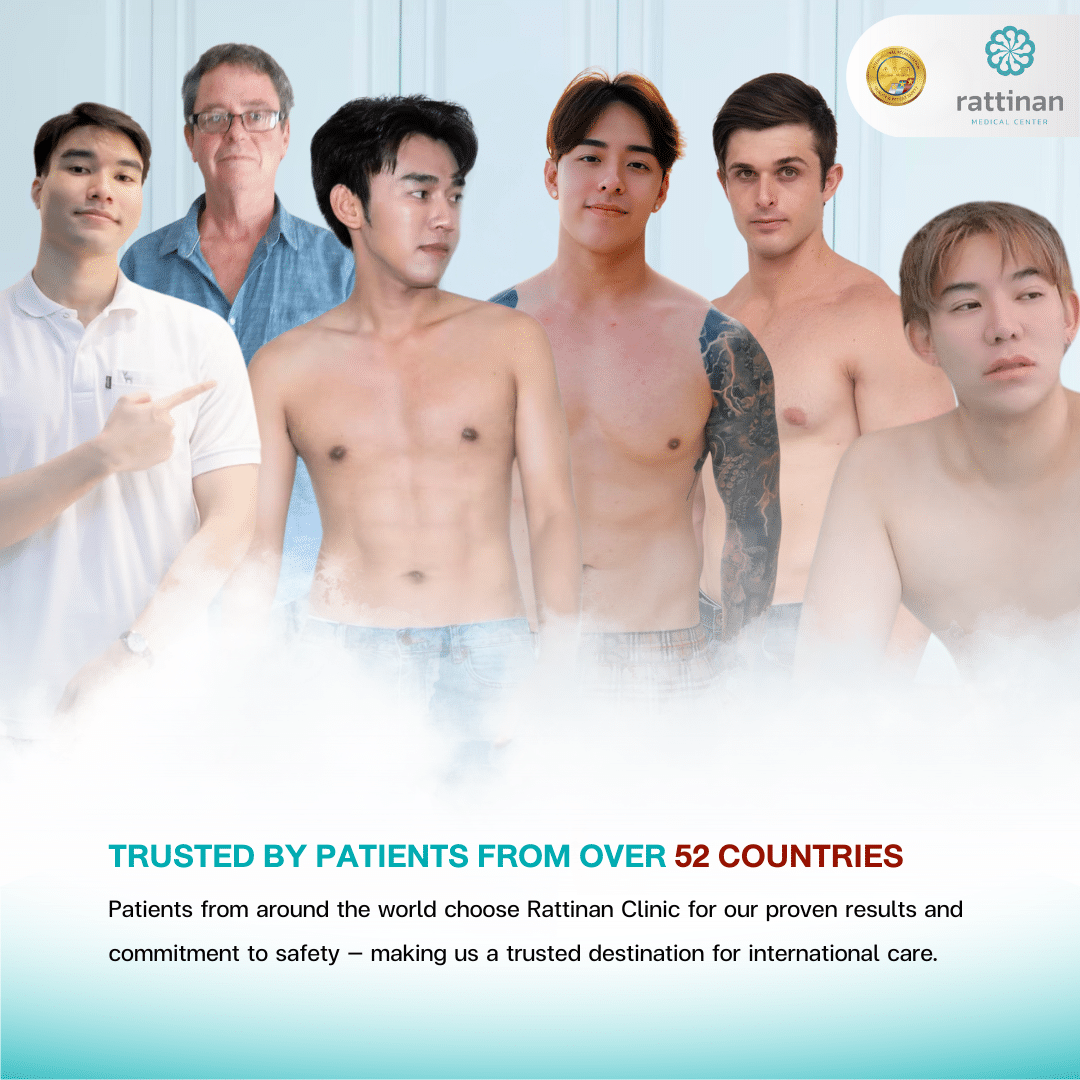
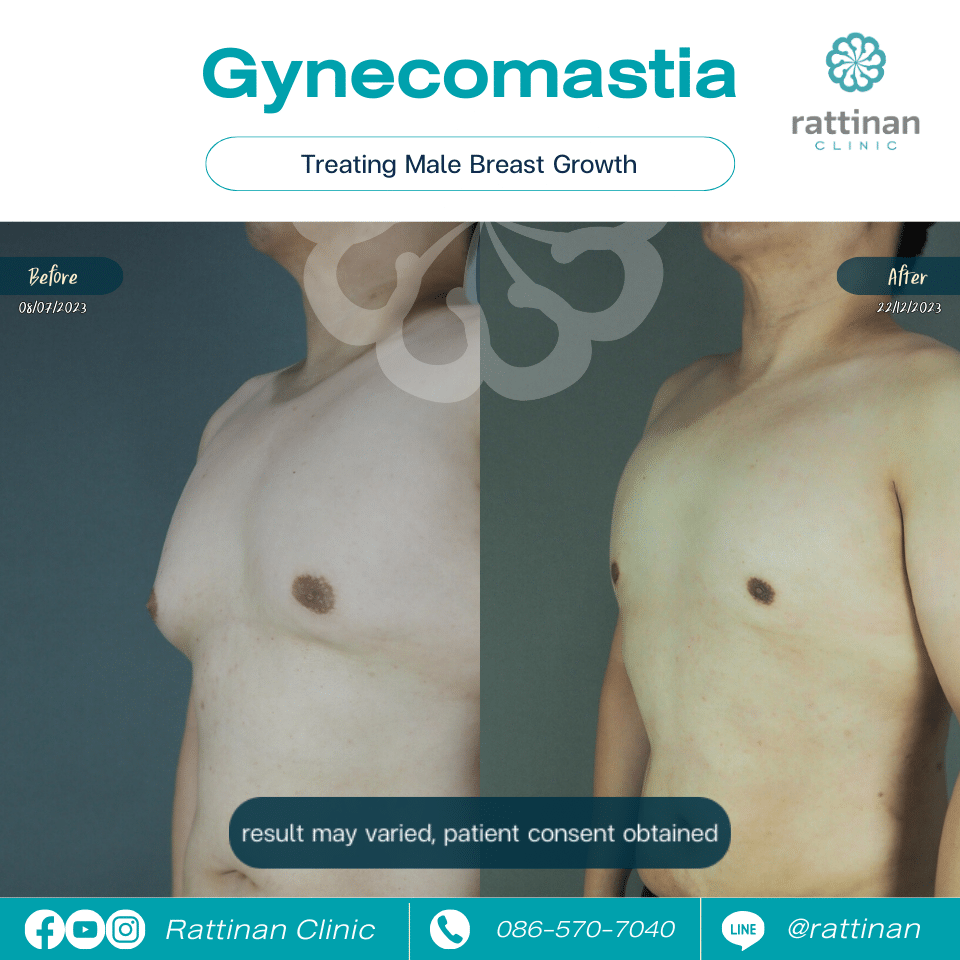
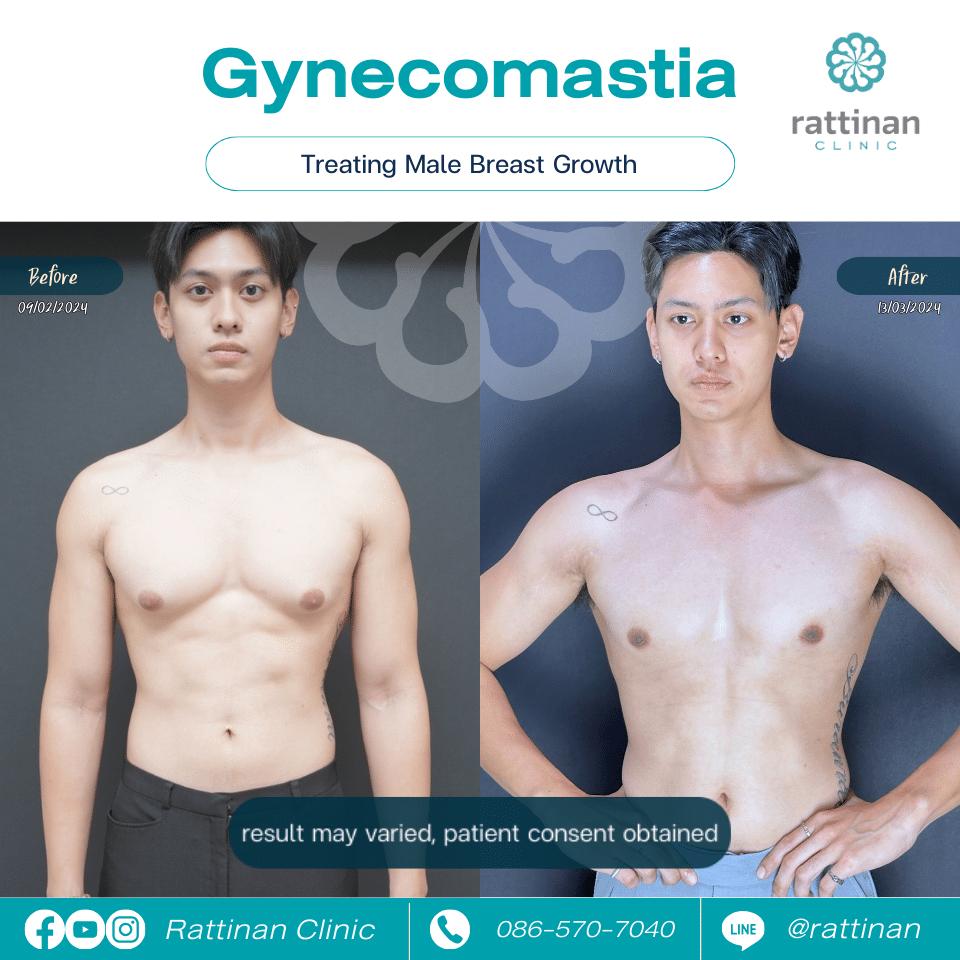
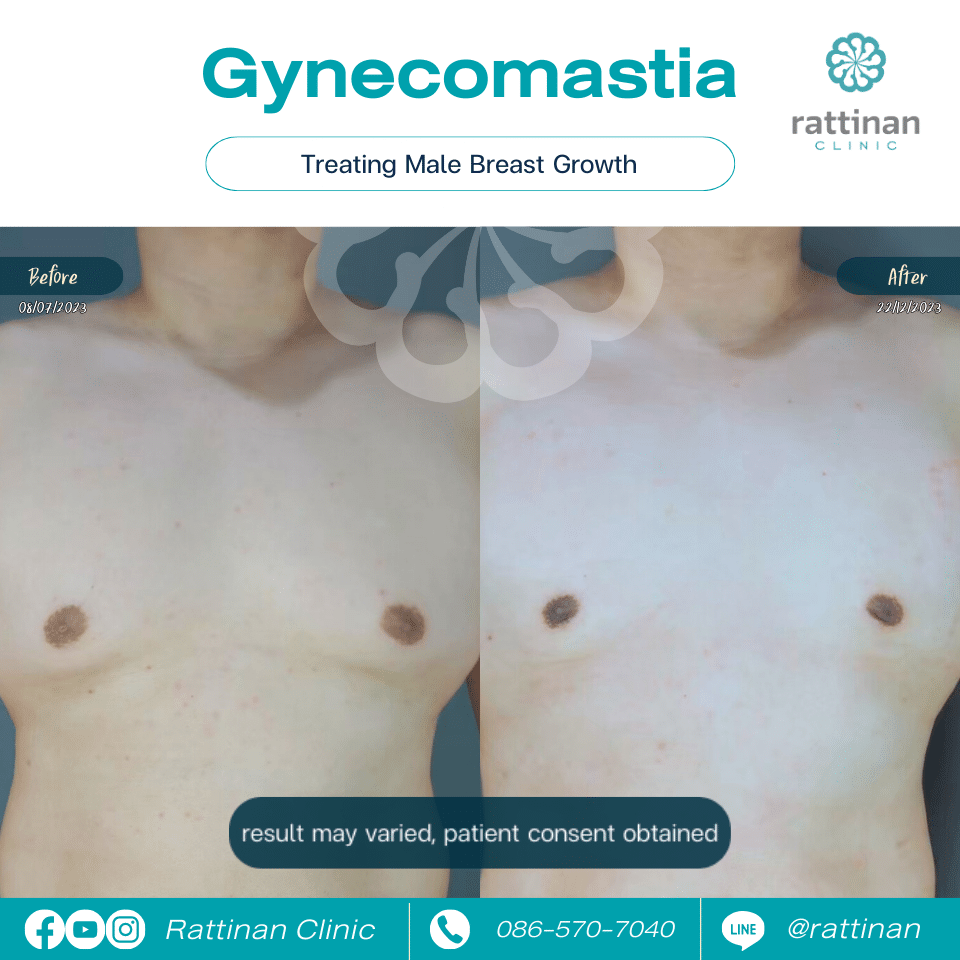
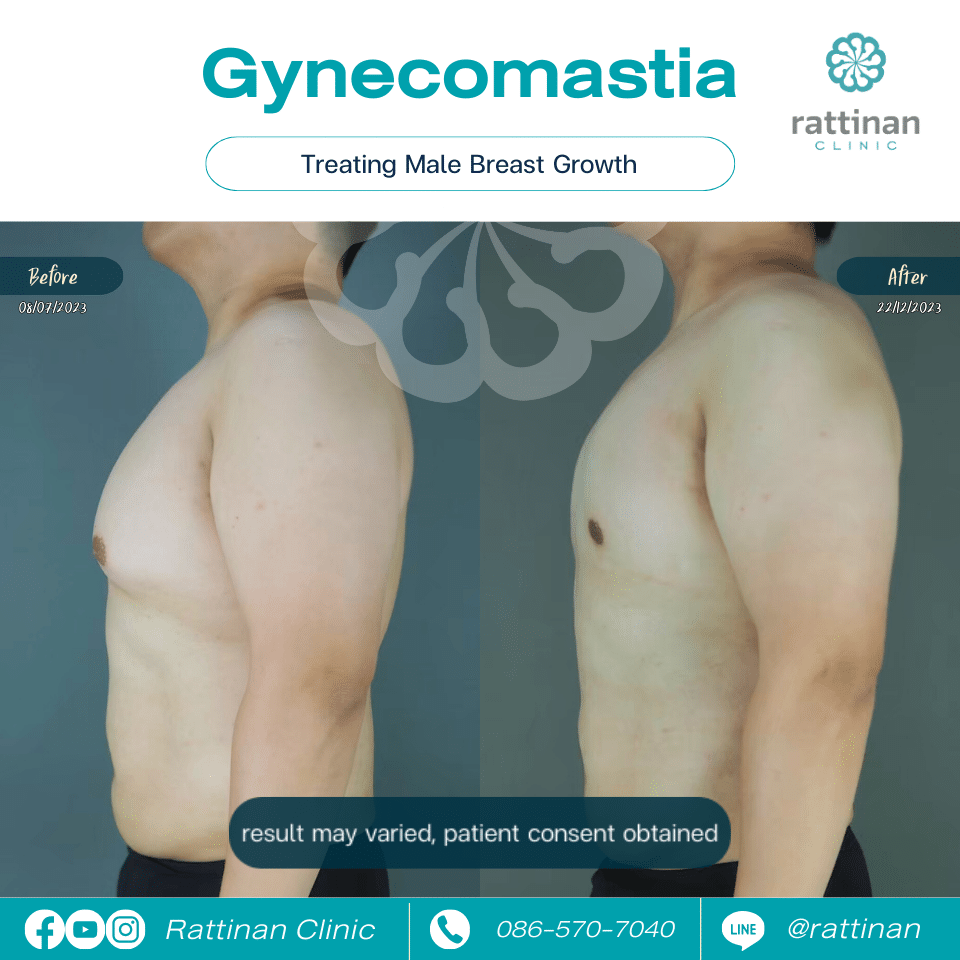
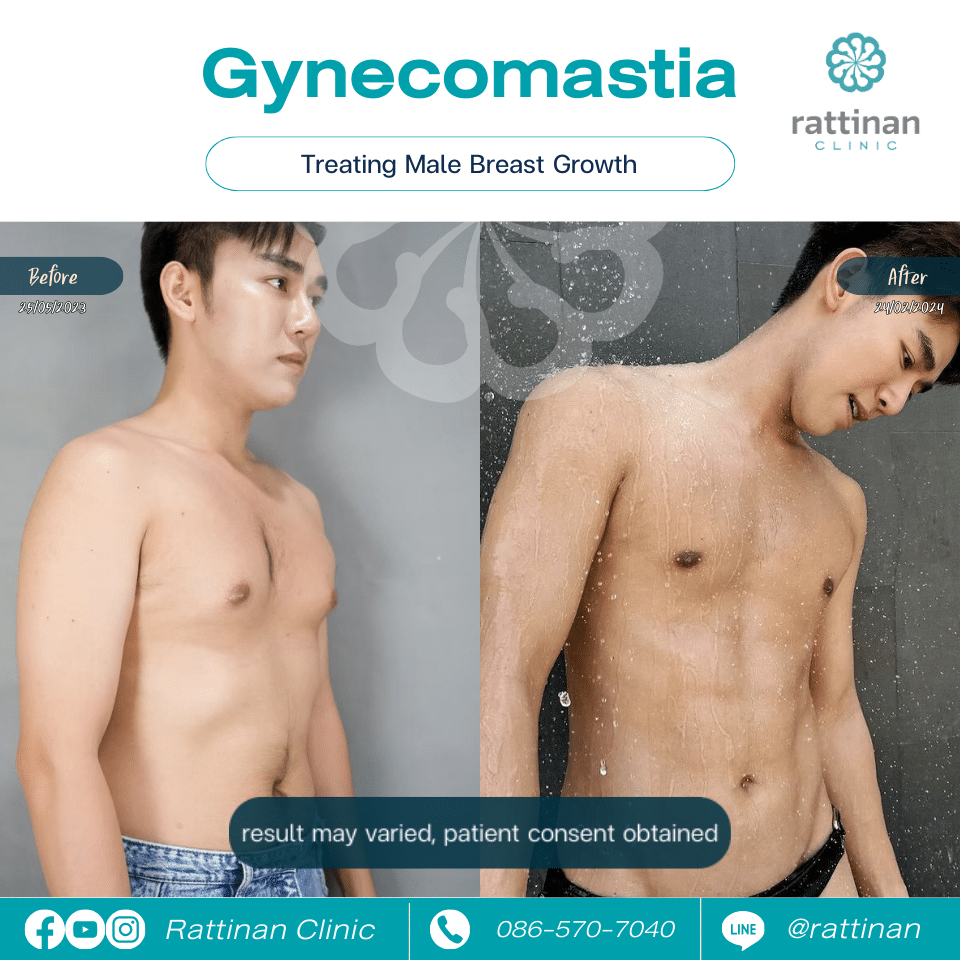
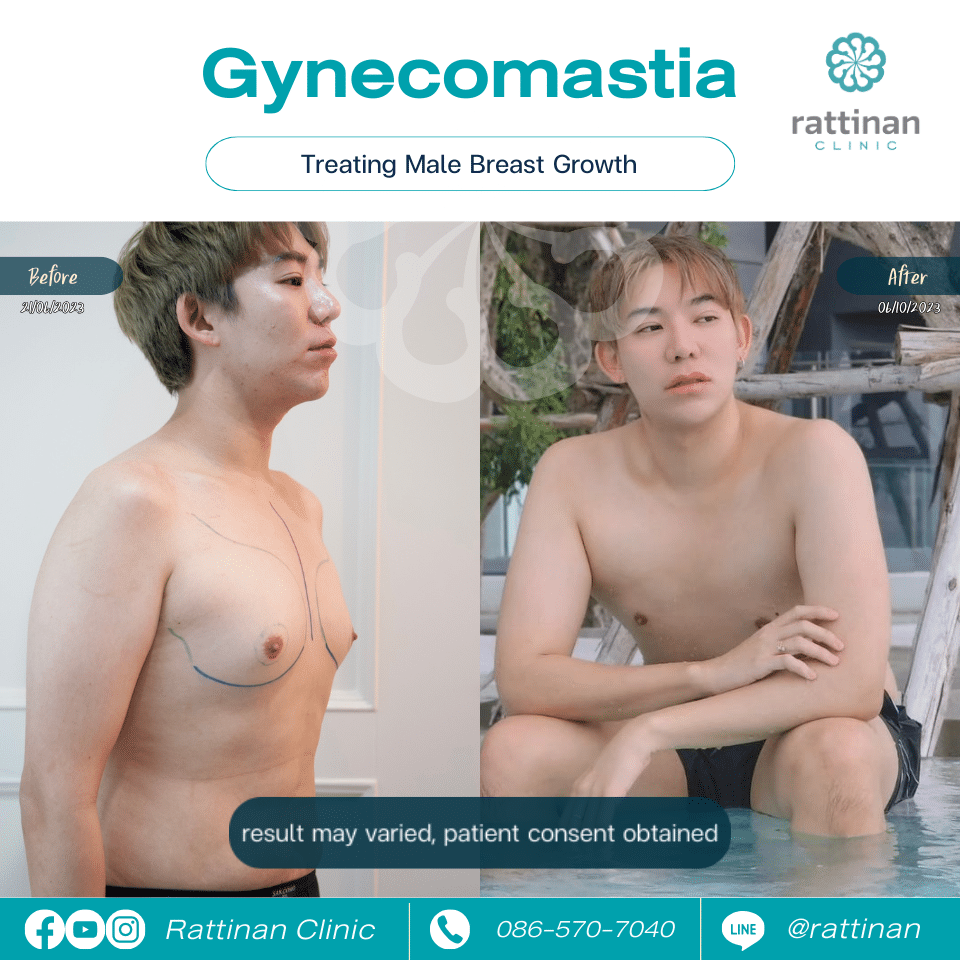
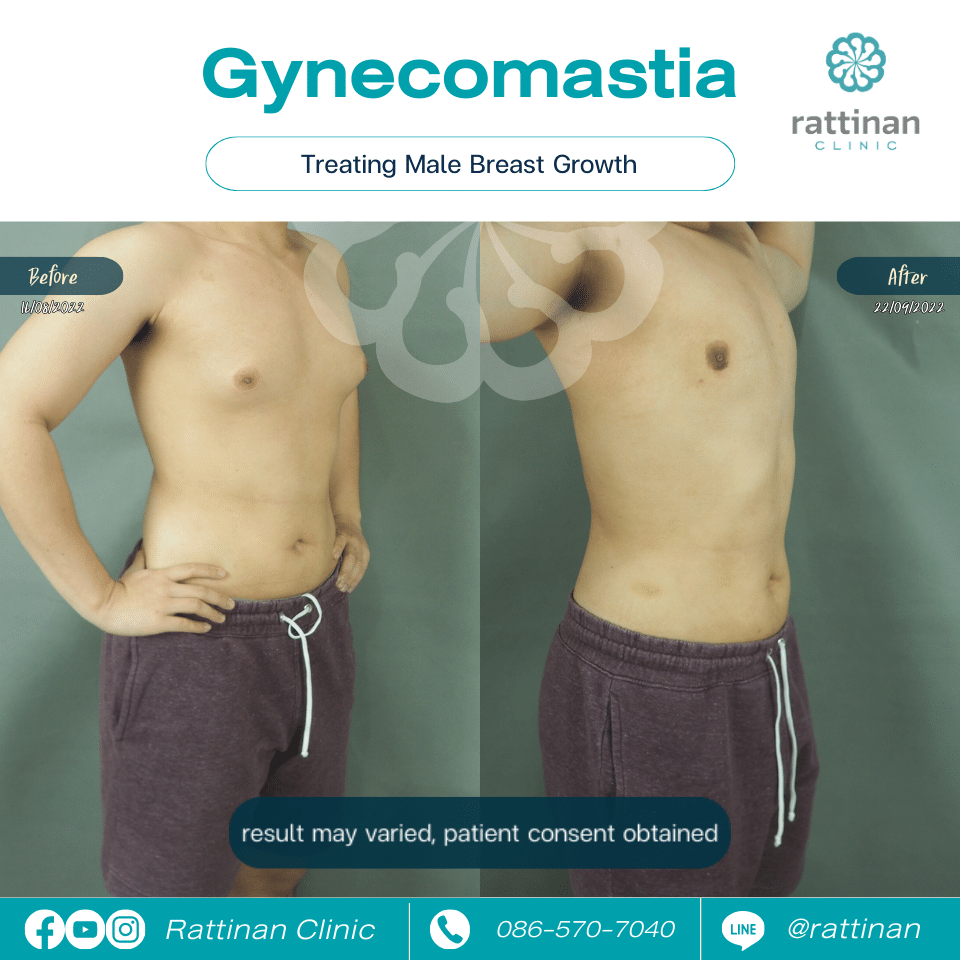
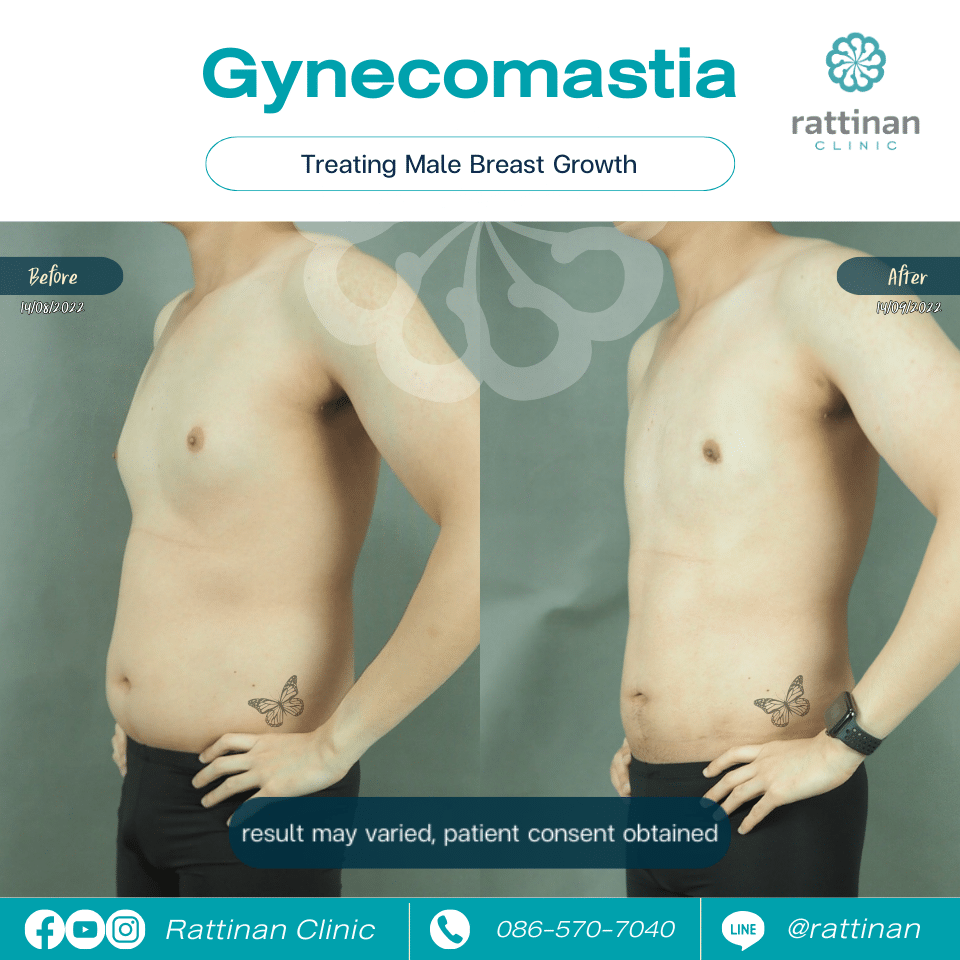
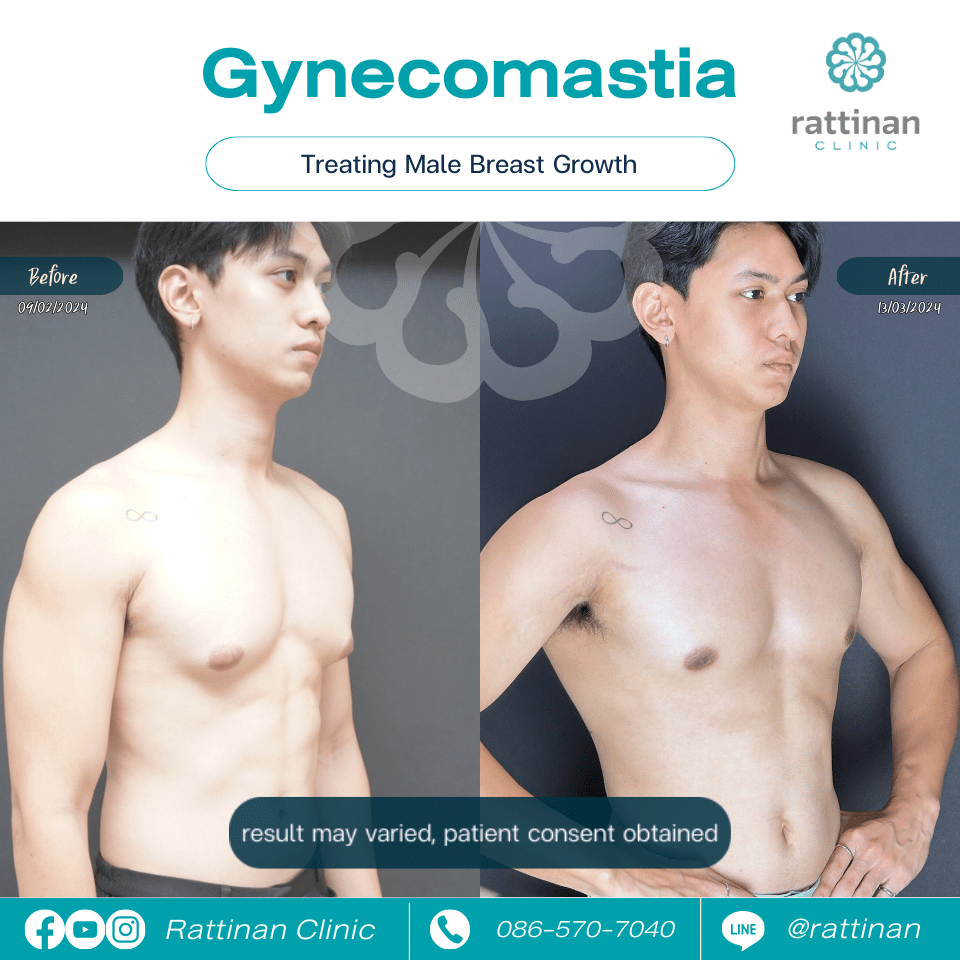
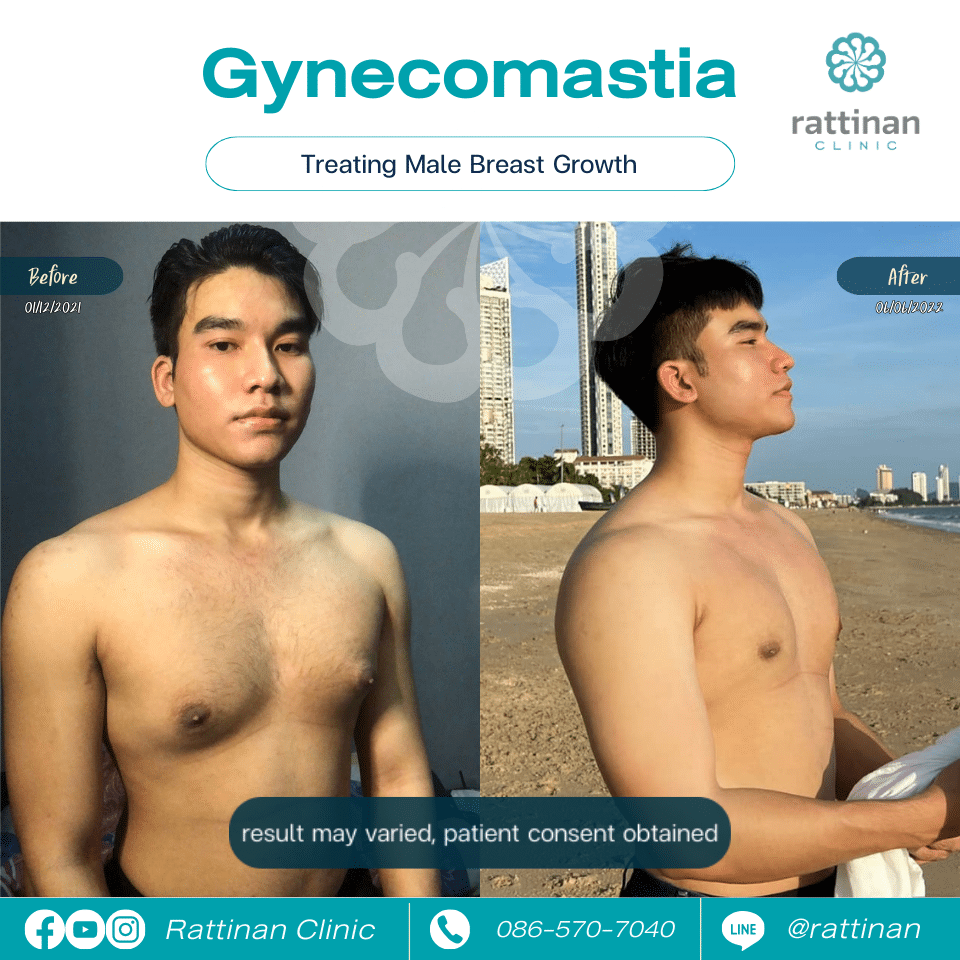
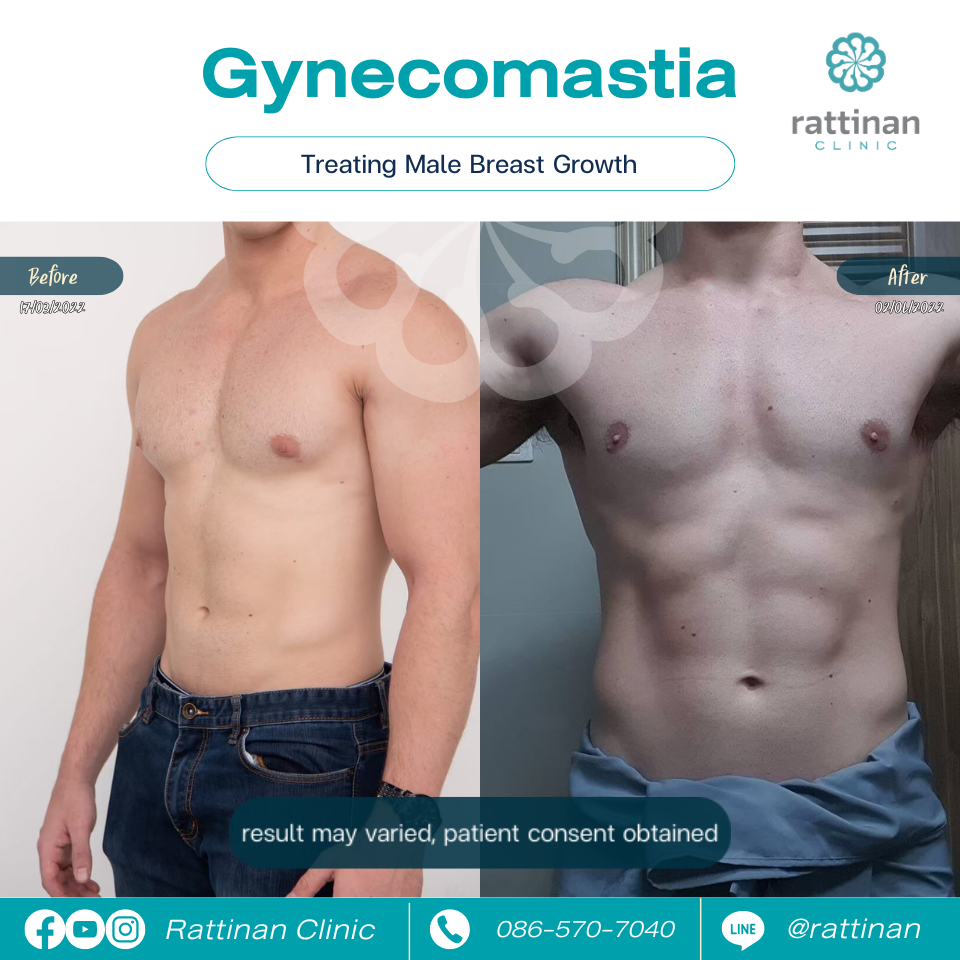
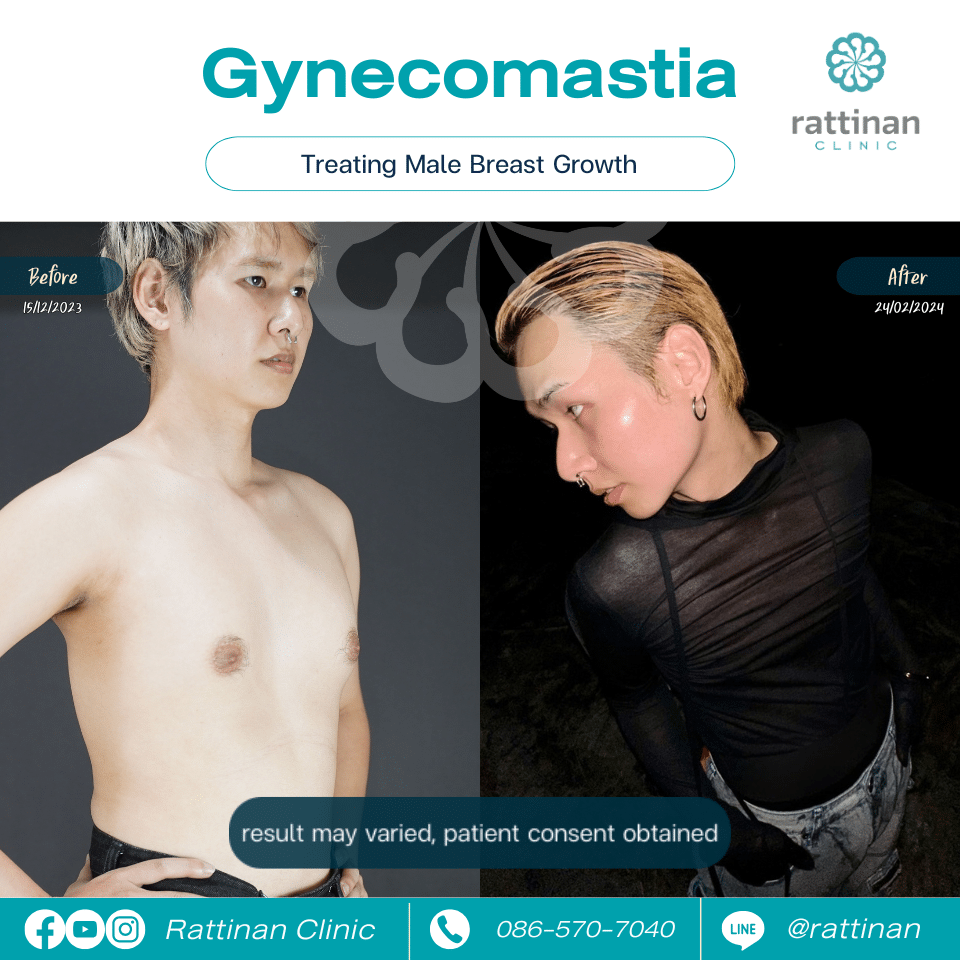
Dr. Suthipong Treeratana (Dr. Nueng) specializes in liposuction and body contouring surgery, focusing on personalized treatment plans to help you feel more confident in yourself.